Are you afraid of bridges? I wouldn’t blame you if you were. While most bridges we see and travel across on a regular basis are soundly engineered and reasonably safe, not all bridges are alike.
Bridges go far beyond the sturdy structures you drive across each day. And some of the world’s most dangerous bridges (not to mention scariest-looking ones) were intended for foot traffic. That’s what we’re going to explore here. But more specifically, we’re going look at hanging foot bridges — you know, the kind that leave you dangling above a rushing river, gorge, or some other bit of nature you wouldn’t want to come face to face with on a fall.
Before we take a look at some of the most dangerous bridges in the world, let’s explore some of the basics about these rope-style hanging bridges.
A Bit of Background on Rope Hanging Bridges
When you think of rope hanging bridges, what do you picture? One or two ropes like the makeshift bridges a young scout might set up on a camping trip? Or something more elaborate? Neither is right nor wrong. Hanging bridges come in a vast array of sizes and styles. Some aren’t even made with ropes. They might be made from vines or even tree roots.
One thing these bridges have in common is that they’re primarily utilitarian. Rope bridges have been used throughout history to simplify travel. Herders would move their flocks from one plateau to another across them. Ancient peoples would connect their cliff-side villages with them. In the case of the old Incan handwoven bridges showcased below, even the Spanish conquistadors used them to transport things like canons, and they marveled at the engineering feat.
If rope hanging bridges could support a cannon, they surely must be safe for you to walk across, right? Well, not so fast. Keep in mind that safety is subjective. Different rope hanging bridges were made in different ways. Some, like the Incan bridge, have been very well maintained whereas others have been left to the elements. Never assume by the way a bridge looks. Do some research before exploring these or other dangerous bridges to see if they’re still safe and in working order.
And now let’s get to our list. In addition to our original list of the world’s most dangerous bridges which you can find below, we’ve added the following three new additions to excite your imagination (or perhaps strike a bit of fear). Enjoy.
Q’eswa Chaca (or Keshwa Chaca), Peru
This handwoven bridge is the last operational Incan rope bridge in existence. It has survived this long thanks to a group of families who meticulously maintain the bridge by making repairs every year (such as replacing support cables) as a way of honoring their ancestors.


Kotmale Footbridge, Sri Lanka
This footbridge crosses the Kotmale Oya, a river in Sri Lanka. There’s something hauntingly beautiful about it despite (or perhaps because of) its apparent disrepair.


Vine Bridges of Iya Valley, Japan
This addition to our list is thanks to a recommendation from our readers in the comments.
Iya Valley is famous for its gorgeous mountains and the old vine bridges that span some of their valleys and rivers. Here’s a beautiful example of the kind of vine bridges you might encounter on a visit.


Now let’s get to our original list of the world’s most dangerous bridges, featuring a collection of hanging rope bridges for your enjoyment.
Note: This post was originally published on May 11, 2009. It was updated with new content and additional photographs on its currently-listed publication date.
—
In an earlier post, we have discussed some of the roads that are listed among the most dangerous in the world … for driving. Today, we’d like to acquaint you with some of the world’s most dangerous bridges that are meant only for walking. These are the so-called rope hanging bridges. You can find a wide variety of these bridges in countries like India, Malaysia, Philippines, New Zealand, Pakistan, Nepal, as well as in the interiors of some other countries.
A bridge can prove to be dangerous for a variety of reasons; either because it’s very old, narrow, too high up above the land, over a quick river or if the wooden “floor” goes missing. What makes them dangerous is the fact that in spite of the condition of the bridge, they have to be used; as many a time, these pathways are the main or even the only way for the local inhabitants of a small village to reach a bigger city. Among all the bridges, the most popular among tourists are the hanging bridges. Let’s take a look at some of them.
Before we start, I’d like to make a small note that this post is not meant to be scientific or a historical fact-sheet. The intention is to provide some entertainment in the form of a picturesque fun post that may even hold a surprise element. If you have ever seen or been on any such bridges, let us know and we’ll add it to the post. Enjoy the post!
Hussaini – Borit Lake, Pakistan


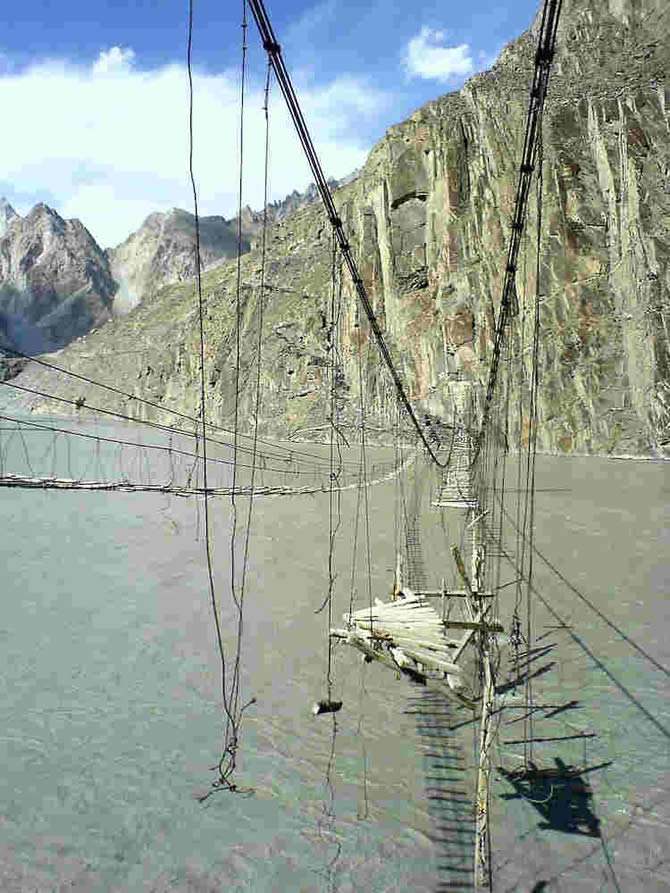


Carrick-a-Rede Rope Bridge, Northern Ireland





Aiguille du Midi at the Mont Blanc Mountain, France


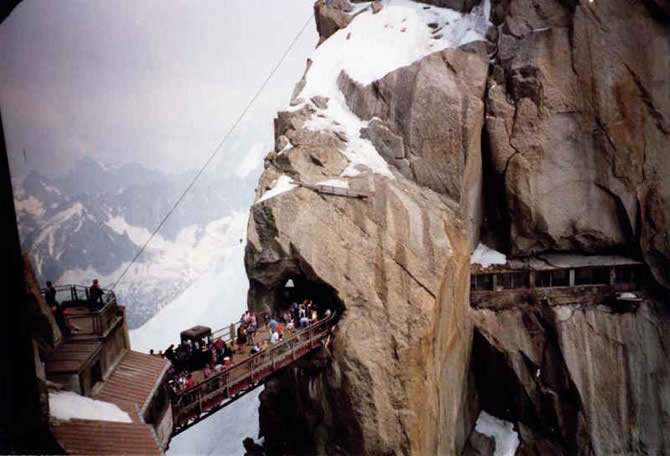
Taman Negara National Park Bridge, Malaysia
That’s the world’s longest Canopy Walkway.
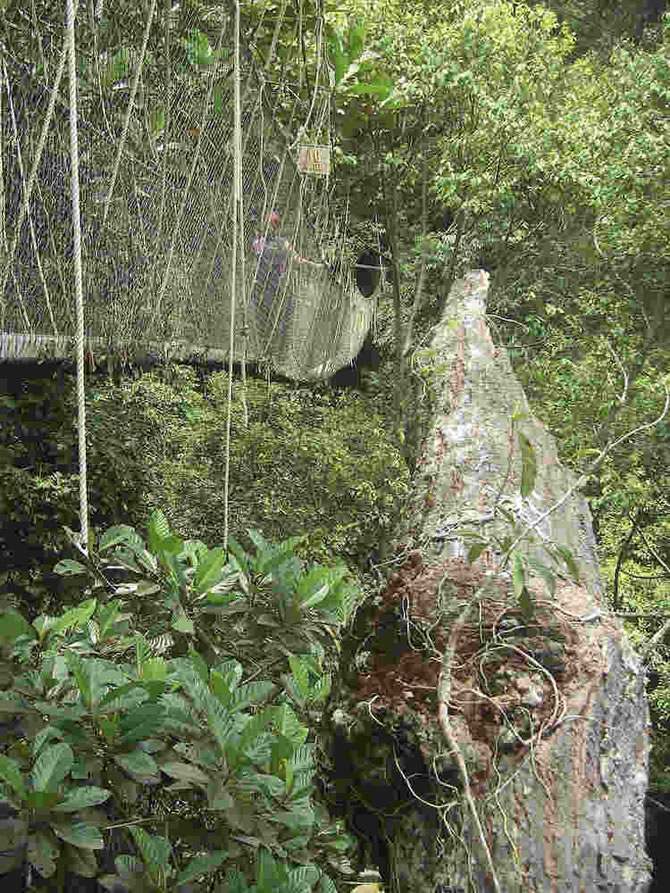


Hanging Bridge of Ghasa in Nepal
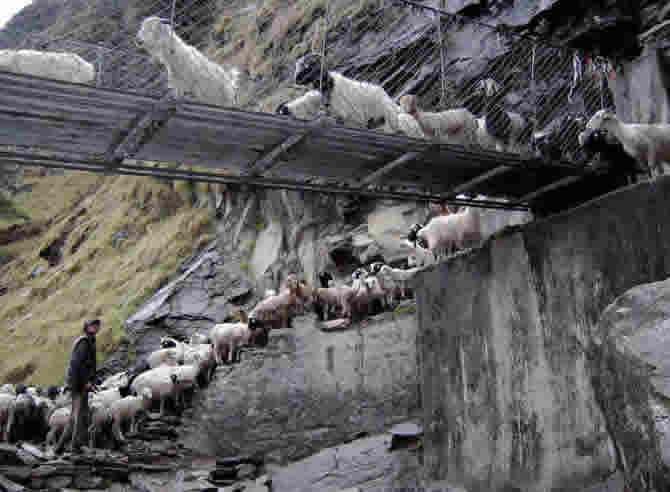

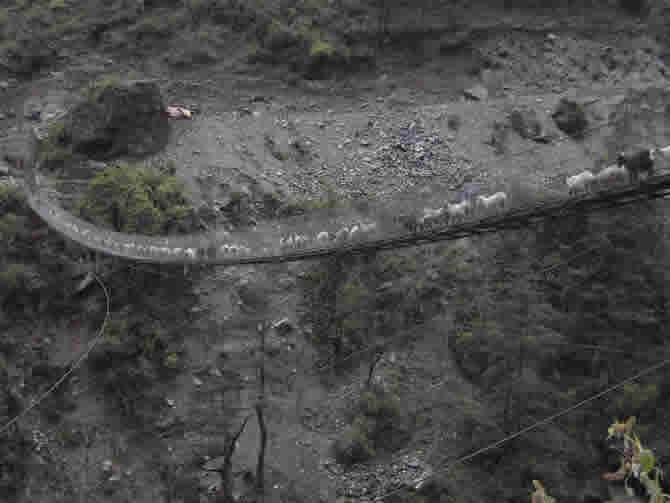

Siju Hanging Bridge, India
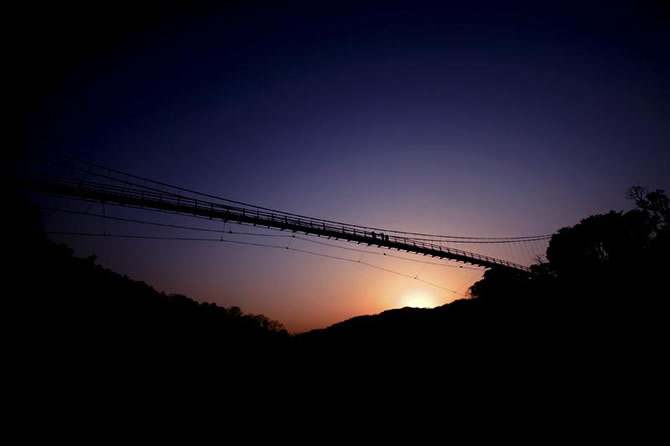
Some Hanging Bridge in India

Hanging Bridge at Thenmala, India

Just some bridge in Philippines

Repovesi nature park Valkeala, Finland

Arenal Hanging Bridges, Costa Rica
A three kilometer hike through the Costa Rican rain forest. There are six suspension bridges, with the largest one at just under 100 meters long and 45 meters off the ground.

Hanging Bridge in Drake Bay, Costa Rica

Hanging bridge in Bohol, Philippines


Kambadaga, a village near Pita

Hanging Bridge at Trift Glacier, Switzerland

Kakum National Park Canopy Walkway



—
Check out the series of Most Dangerous Roads in the World. Part 2 and Part 1 of Most Dangerous Roads













